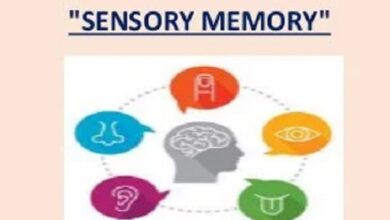Facial feedback theory gestures that create emotions
The facial feedback theory (feedback) proposes that facial movements associated with a certain emotion can influence affective experiences . It is one of the most representative theories of the psychological study of emotions and cognition, so it continues to be constantly discussed and experimented with.
In this article , we will see what the facial feedback theory is , how it was defined and what some of its experimental verifications were.
Facial Feedback Theory Does facial movement create emotions?
The relationship between cognition and emotional experiences has been widely studied by psychology. Among other things, attempts have been made to explain how emotions occur, how we make them conscious, and what their individual and social function is.
Some research in this field suggests that emotional experiences occur after we cognitively process a stimulus associated with an emotion. In turn, the latter would generate a series of facial reactions, for example a smile, that perceive the emotion we are experiencing.
However, facial feedback theory, or facial feedback theory, suggests that the opposite phenomenon can also occur: performing movements with the facial muscles related to a certain emotion has a significant impact on the way we experience it; even without the need for intermediate cognitive processing.
It is called the facial “feedback” theory, precisely because it suggests that muscle activation of the face can generate sensory feedback to the brain ; a question that finally allows us to consciously experience and process an emotion.
Basic researchers and the like
The facial feedback theory has its antecedents in late 19th century theories, which prioritize the role of muscle activation with the subjective experience of emotions .
These studies continue to the present day and have been developed in an important way since the 1960s, when theories of affectivity became especially relevant in the social and cognitive sciences.
In a compilation on the background of the facial feedback theory, Rojas (2016) reports that, in the year 1962, the American psychologist Silvan Tomkins proposed that the sensory feedback carried out by the muscles of the face and the sensations of the skin, can generate a experience or emotional state without the need for cognitive intercession. This represented the first major antecedent of facial feedback theory.
Later, the theories of Tournages and Ellsworth were added in 1979, which spoke of the hypothesis of emotional modulation mediated by proprioception, which constitutes another of the great antecedents of the definition of this theory. Paul Ekman and Harrieh Oster ‘s work on emotions and facial expressions is also recognized in the same decade.
Many other researchers followed between the 80s and 90s, who carried out numerous experiments to see if in fact muscle movements can activate certain affective experiences. We will develop some of the most recent ones below, as well as the theoretical updates that have derived from them.
The held pen paradigm
In 1988, Fritz Strack, Leonard L. Martin, and Sabine Stepper conducted a study asking participants to watch a series of funny cartoons. Meanwhile, part of them were asked to hold a pen with their lips. The others were asked the same thing, but with their teeth.
The previous request had a reason: the facial posture made with a pen between the teeth contracts the main zygomatic muscle, which we use to smile , which favors the smiling facial expression. On the contrary, the facial movement performed with the pen between the lips contracts the orbicularis muscle, which inhibits the muscular activity necessary to smile.
So the researchers measured facial activity associated with smiling and wanted to see if the subjective experience of joy was related to that activity. The result was that people who held the pen with their teeth reported that the cartoons were more fun than those who held the pen with their lips.
The conclusion was that facial expressions associated with some emotion can effectively transform the subjective experience of that emotion; even when people are not fully aware of the facial gestures they are making.
Is facial feedback inhibited when we are observed?
In 2016, nearly three decades after the Strack, Martin and Stepper experiment, psychologist and mathematician Eric-Jan Wagenmakers, along with his collaborators, replicates the held pen experiment.
To everyone’s surprise, they didn’t find enough evidence to support the facial feedback effect. In response, Fritz Strack explained that the Wagenmakers experiment had been carried out with a variable that was not present in the original study, which had certainly affected and determined the new results.
This variable was a video camera that recorded the activity of each of the participants . According to Strack, the experience of feeling watched caused by the video camera would have significantly modified the effect of facial feedback.
The effect of external observation on affective experience
Given the earlier controversy, Tom Noah, Yaacov Schul, and Ruth Mayo (2018) repeated the study again, first using a camera and then omitting its use. As part of their conclusions, they propose that, far from being exclusive, the Strack and Wagenmakers studies are consistent with theories that explain how observed sentiment affects internal signals related to the most basic activity; in this case, with facial feedback.
In their investigations, they found that the effect of facial feedback is notoriously presented when there is no registration of electronic devices (meaning that participants are not concerned with monitoring their activity).
On the contrary, the effect diminishes when participants know they are being monitored by the video camera. The inhibition of the effect is explained as follows: the experience of the observed feeling creates the need to adjust to external expectations , for which internal information is not available or not prepared.
Thus, Noah, Schul and Mayo (2018) concluded that the presence of the camera led the participants to adopt the position of a third perspective on the situation and, consequently, generated less attunement to the facial feedback of their own muscles.



